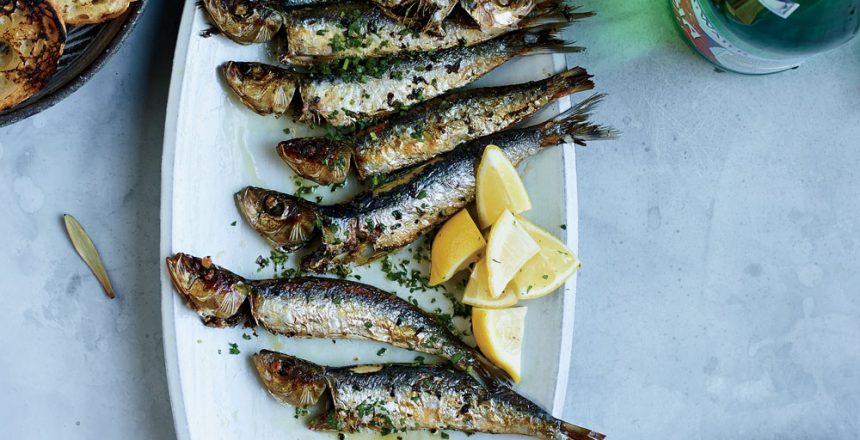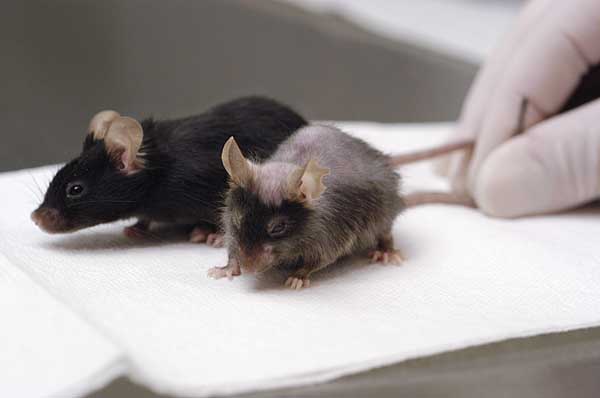Omega-3 fatty acids are the kind found abundantly in fish and fish oil, and they’re important in fighting aging and disease, most notably coronary heart disease, but also cancer and other diseases.
A recent study found a strong, inverse association between the amount of omega-3 fatty acids in the blood, and aortic calcification, indicating that fish and/or fish oil may spare you from coronary heart disease.[1]
Ideally, we’d like to know an optimal dose of omega-3 fatty acids to attain healthy blood levels.
Lots of work has gone into finding out, but there’s a problem, one that all of nutritional epidemiology deals with, and that is that virtually everyone consumes a great deal of omega-6, the type found in seed oils, and they compete with omega-3 for the places where they’re needed in the body.
Omega-6 and omega-3 compete
Omega-6 and omega-3 fatty acids both get incorporated in to membrane phospholipids in proportion to their presence in the blood, which corresponds to dietary intake.
“A competitive, hyperbolic relationship predicts the proportions of n-3 and n-6 HUFA accumulated from n-3 and n-6 nutrients.” [“n” here is another way of saying “omega”, and “HUFA” stands for “highly unsaturated fatty acids”, a term for referring to the fatty acids that are incorporated into cell membranes.]
“Eating less n-6 nutrients allows competing n-3 nutrients to raise more effectively the %n-3 in HUFA.”
The chart below shows the competition between the two types of fatty acids; the more omega-3, the less omega-6, and vice versa.

The competition between the two means that the amount of fish or fish oil that you need for optimal health can vary greatly, depending on what else you consume.
Data from MRFIT, a long-running clinical trial, showed that those in the lowest quintile (fifth) of tissue omega-6 had 40% lower risk of cardiovascular death than those in the highest quintile.[2]

The MRFIT quintiles don’t span a very wide range, since most Americans eat little fish. When compared to other parts of the world, the MRFIT quintiles all cluster around the high end of the range. See chart below.

Ideally, one would like to get the % n-6 HUFA down to levels seen in Japan, or even Greenland, both countries with low levels of coronary heart disease, about one third or less than American rates.
Omega-3 index
The omega-3 index is a measure of the amount of omega-3 found in red blood cells. Higher levels of the omega-3 index have been found to be associated with far lower levels of sudden cardiac death – which is usually a consequence of a heart attack.[3] The omega-3 index can be thought of as the inverse of the amount of omega-6 incorporation.
What we’d like to know is how much fish and/or fish oil you need to consume to get the omega-3 index high enough.
A new study looked at how much people need to get to an omega-3 index of >8%, which is associated with the lowest cardiovascular risk.[4]
They found that “on average >2 oily fish meals per week plus an omega-3 supplement are required to achieve an Index of >8%.”
That seems like a lot, and is probably far more than most Americans get. However, most people consume lots of omega-6 from seed oils, which as we saw above, inhibits omega-3 incorporation.
A recent paper on the importance of maintaining a low omega-6/omega-3 ratio in platelet aggregation, coagulation, and thrombosis states that “in general, 2-4 g of EPA/DHA per day is necessary to provide the full antiatherosclerotic, anti-inflammatory, and antiplatelet benefits.”[5]
This figure, again, is a result of studies with a high intake of omega-6 fatty acids from seed (vegetable) oils.
Word hasn’t gotten out to the masses that you shouldn’t consume seed oils, and in fact health authorities still promote them.
But if you don’t consume seed oils, you need less omega-3.[6] The more omega-6 people consume, the less omega-3 they have in their cells – where it counts – other things being equal.
How diverse food habits affect omega-3 in tissue
The chart below shows how diverse food habits impact omega-6/3 tissue balance, from Greenland, with a high omega-3 intake from seafood on one extreme, to West Virginia, with a presumably high intake of seed oils and low seafood intake on the other.[7]

The same reference has the following chart of foods showing how they affect omega-6/3 balance:

Note how “fats and oils” are the lowest scoring – seed oils. However, nuts also score surprisingly low, one reason I don’t eat them.
It’s difficult, maybe impossible, to say what the optimal intake of omega-3 is if you don’t consume seed oils. But my takeaway from the chart above is that if you’re not fairly careful, you’ll end up on the wrong side of balance. In the traditional Japanese diet, no seed oils are consumed and fish is eaten nearly daily.
Certainly, eating oily fish at least a couple times a week is a good idea. You can do that very simply by opening a can of sardines for lunch or a snack once in a while. Just make sure that they’re not packed in a seed oil – and many of them are. They should be in sardine oil, olive oil, or water. (Some of them are packed in tomato sauce – Lord knows why, but they’re OK to eat.)
So, I reach a vague conclusion here as to how much fish you need. Some, for sure. But perhaps a more important conclusion, one you’ve heard before, is don’t use seed oils.
Fish are part of a healthy diet; seed oils are not. Eating fish is also associated with a lower body mass index.
[1] Mahajan, Hemant, et al. “Serum Long-Chain n-3 Polyunsaturated Fatty Acids and Aortic Calcification in Middle-Aged Men: The Population-Based Cross-sectional ERA-JUMP Study.” Nutrition, Metabolism and Cardiovascular Diseases(2019).
[2] Lands, William EM. “Diets could prevent many diseases.” Lipids 38.4 (2003): 317-321.
[3] Harris, William S., and Clemens Von Schacky. “The Omega-3 Index: a new risk factor for death from coronary heart disease?.” Preventive medicine 39.1 (2004): 212-220.
[4] Jackson, K. H., et al. “Association of reported fish intake and supplementation status with the omega-3 index.” Prostaglandins, Leukotrienes and Essential Fatty Acids 142 (2019): 4-10.
[5] DiNicolantonio JJ, OKeefe J. Importance of maintaining a low omega-6/ omega-3 ratio for reducing platelet aggregation, coagulation and thrombosis. Open Heart 2019;6:e001011. doi:10.1136/ openhrt-2019-001011
[6] Lands, B., D. Bibus, and K. D. Stark. “Dynamic interactions of n-3 and n-6 fatty acid nutrients.” Prostaglandins, Leukotrienes and Essential Fatty Acids 136 (2018): 15-21.
[7] B. Lands, E. LamoreauxDescribing essential fatty acid balance as 3–6 differences rather than 3/6 ratios, Nutr. Metab., 9 (2012), pp. 46-54














14 Comments
OT, but I think it’s a valuable insight into the motivation and business logic of the pharma (and perhaps related food) industry:
Novartis has made a medicament that heals spinal muscular atrophy.
Financial problem: No continuous profit stream like that from a TREATMENT (that has to be applied for decades).
It’s a gene therapy, you apply it once (rewrite genes), and the patient is healed forever.
Novartis now argues this one-dose treatment should cost two million dollars to the patient as compensation because it’s only applied and sold once per patient.
The actual cost is a tiny fraction of that.
https://www.usnews.com/news/top-news/articles/2019-05-24/us-approves-2-million-novartis-gene-therapy-for-rare-deadly-muscle-disorder
Wow!
How much did it cost Novartis to develop the treatment? Probably hundreds of millions of $ which need to be factored into the costs of the drug. Not sure what the actual calculation is behind the price, but without a profit motive, they would not develop these types of treatments.
I am not critical in any way of the company.
But they must know that there will be very few potential customers that have 2M$ flying around between the cracks of their couch to pay for such a remedy.
I wonder if (as this is an ongoing discussion in the US) this gives such companies an incentive to lobby for “socialized medicine”, as it’s called, because it appears to me that this will be the only realistic way they could ever get paid such large amounts per patient.
According to the Novartis filings, they recieved $173,887,776 in subsidies from the USA (Federal and State) and $450,000,000 loan bailouts from the USA since 2000. It looks like we already paid for these drugs and then they charge us again when we need them.
(Somewhat OT)
I try to spread the word about the ketogenic diet and your principles among friends and family.
To my surprise, I am sometimes met with fierce resistance.
I was sent a link to this article:
https://en.wikipedia.org/wiki/Low-carbohydrate_diet
Wikipedia is the 1st (and often only) source of “quality information” for millions of people – its content moves politics and commerce.
The whole thing reads like a fierce campaign against low-carb eating, the first point under “safety” basically telling the reader that low-carb will kill you. But the whole tone is generally negative.
I noticed something that looked to me like an anti-low-carb campaign. Apparently it’s sprinkled all over international media,
with low-to-medium frequency, but high persistence. Somebody must be paying for all this and keep pushing out information.
Example:
https://www.dailymail.co.uk/femail/article-6820045/Exercise-physiologist-slams-Keto-diet-says-lean-outside-obese-inside.html
I wonder if the intended effect of such campaigning is to cause “fear, uncertainty and doubt” – millions of people are made to keep hearing only conflicting information about healthy eating, and must come to the conclusion that “nothing is certainly known, even the experts contradict themselves” – with the result that they very probably ignore all advice and “science” and just eat what feels convenient and most rewarding – and then high-carb, ultraprocessed food will win practically every time.
“I wonder if the intended effect of such campaigning is to cause “fear, uncertainty and doubt” – ”
I’ve wondered that also
Grass fed beef and dairy and free range chickens and eggs. Doesn’t that put them into the positive side?
Hi Mr. Mangan,
It seems that a lot of the current focus is on getting a good n-6 to n-3 ratio. There’s not a lot of agreement on what the best ratio is but since so many of our foods (not just processed foods and “vegetable oil”) are so high in n-6, it seems in practical terms that one should try to minimize n-6 in the diet. I looked online at the n-6 content of various foods. Some notes assuming the goal is to minimize n-6 consumption:
Per gram of fat, beef is better than pork which is better than chicken. Still, chicken isn’t real high in fat so fatty pork is worse than light or dark meat chicken. Beef is the winner.
Whole milk has a good polyunsaturated fat profile.
As a protein source, eggs are rather high. And those fancy eggs that are high in omega-3 don’t make much difference.
As I think you’ve said, nuts are bad. Walnuts despite being a “good source of omega 3” have really high levels of n-6.
Even olive oil and avocado oil have quite a bit of n-6 (not as much as many other oils but still high). What jumps out at me is just how high nuts and even healthy oils are in n-6. It seems eating them could easily swamp any differences in the fat profile of meats.
So it seems to me you should eat beef and fatty fish and drink milk. If you eat pork or chicken eat lean cuts. Avoid nuts and even most oils (e.g. avocado and olive oil). Butter or coconut oil is better than avocado and olive.
What do you think?
For reference, here are some n-6 numbers I collected (in milligrams). For nuts and meats the numbers are roughly per ounce (cooked for meat) which means protein content is roughly equal. Fats I think were per tablespoon.
Walnuts: 44567
Peanuts: 4393
Almonds: 3573
Ground beef: 112
Ground pork: 459
Chicken (dark meat, no skin): 302
Egg (1): 594
Whole Milk: 293 (n-6 to n-3 ratio is only 1.6 to 1 !!)
Olive oil: 1318
Avocado oil: 1754
Butter: 382
For reference, fatty fish (sardines salmon, etc.) seems to have an n-3 content of 300-500 mg per ounce.
I wonder if increasing omega 3 intake leads to a relative deficiency of vitamin E.
I am making several assumptions, so here goes:
Jaminet’s graph of relative oxidation potential for omega 6 and omega 3
LA, omega 6 = 1
ALA, omega 3 = 2
AA, omega 6 = 4
DHA, omega 3 = 8
(No data for DPA and EPA. for the sake of calculation later, let’s use 4 for both)
source: https://perfecthealthdiet.com/2013/07/omega-3-fats-and-cancer/
Institute of Medicine recommendations for omega 3 and omega 6
1.7 g of ALA
17 g of LA for an young adult male
(No recommendations for long chain omega 3 and omega 6, yet)
Institute of Medicine recommendations for vitamin E
15 mg (from natural form in food)
Vitamin E’s job is to protect against lipid peroxidation. So let’s assume that the vitamin E recommendation covers the PUFA intake exactly.
Time for algebra!
1.7(2x) + 17x = 15 mg
20.4x = 15
x ~ .735
so, .735 mg of vitamin E from food is needed to protect against lipid perioxidation of 1 g of LA.
And by the factors of above, then
1.47 mg of vitamin E is needed to protect against lipid peroxidation of 1 g of ALA.
5.88 mg is needed for 1 g of DHA.
Let’s look up 100 g of raw salmon
https://nutritiondata.self.com/facts/finfish-and-shellfish-products/4109/2
34 mg of ALA (peroxidation factor of 2)
419 mg of EPA (peroxidation factor of 4)
96 mg of DPA (peroxidation factor of 4)
586 mg of DHA (peroxidation factor of 8)
The total peroxidation equivalent would be 8876 mg of LA or 8.876 g of LA.
The vitamin E required to protect the omega 3 from oxidation in 100g of salmon would be 6.52 mg (from 8.876 * 0.735).
100 g of salmon has .6 mg of vitamin E.
Thus, eating salmon creates a relative deficiency in vitamin E because it does not have enough vitamin E to prevent lipid peroxidation of the omega 3.
Thoughts?
Oops, entered the wrong factor in my spreadsheet. The peroxidation equivalent would be 6816 mg of LA and then, 5 mg of vitamin E.
(off-topic)
Nice Irony: Popeye was right
Interested in a muscle-growth enhancer that
– works so well it is to be placed on the anti-doping list
– is just a normal food
– low calories
– and cheap?
Welcome to the world of spinach:
https://www.euronews.com/2019/06/25/popeye-was-right-spinach-chemical-should-be-banned-for-athletes-german-scientists-say
https://www.huhs.edu/literature/20-Hyroxyecdysone.pdf
https://link.springer.com/article/10.1007/s00204-019-02490-x
Effective dose around 0.5 to 1 kg. Sounds a lot, but isn’t – if you take it with a meal once or twice a day.
Most convenient form: Frozen “blocks” of pre-cut, pre-washed spinach, often available for less than 50 cents a pound. Just add salt, spices, etc. and microwave.
Goes well with eggs.
Downside?
It’s high in oxalic acid, and if eaten often and much, may increase odds for getting kidney stones.
But there’s an easy fix: Eat it together with calcium-rich foods (milk, yogurt, cheese) – then it’s converted to calcium oxalate, which is not absorbed into the body and will take the back door out.
I researched for a few hours and could not find other issues.
Happy eating.
ADDENDUM:
A further link:
https://creuslife.com/foods-that-contain-phytoecdysteroids/